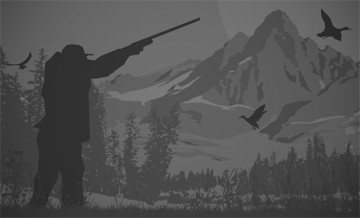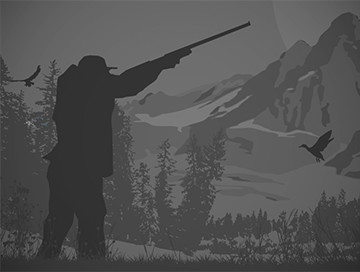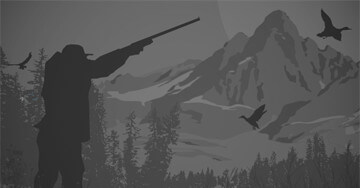Hunting in Australia
View 22 hunts View all hunts22 hunting trips from 3 outfitters starting from $498
Australia on map
About hunting in Australia
With tropical rainforests in the northeast, mountain ranges in the southeast, and dry desert in the “Red Center,” Australia is a huge continent with a variety of terrain. The semi-arid land commonly known as the “Outback” makes up by far the largest portion of land. Australia is both the driest inhabited continent and has one of the world’s lowest population densities, just 2.8 people per square kilometer, most of whom live along the coasts. Hunting in this fabled land is a true adventure. The country has a number of huntable native species including kangaroo and dingo, but most of its big game is non-native and can be hunted any time of year. The biggest draws are water buffalo, banteng, feral boar, and a host of deer species, including sambar, hog deer, red deer, fallow deer, and rusa deer. The water buffalo is a truly impressive quarry for a big-game hunter, with horns that can grow up to 60 inches wide. These are also tough animals, requiring large calibers and strong bullets to bring down.
What you need to know
-
1. Planning your trip
-
2. Upon arrival
-
3. Hunting
-
4. After the hunt
Planning your trip
Visas
U.S. citizens don't need visas to enter Australia. However, they do need to obtain what is called an Electronic Travel Authority (ETA), which basically works like an online visa. The ETA costs AU$20 and may be applied for at http://www.eta.immi.gov.au/. Once you fill out the application and pay the fee, your application is processed instantly and linked to your passport number. You should get an e-mail confirming your visa within a few minutes.
Health considerations
Routine vaccines are recommended for travel to Australia; malaria prophylaxis is not required.
Firearm importation
If you want to use your own firearms during your hunt in Australia, you need to obtain two permits: An international visitors firearms permit (to allow to possess, carry and use firearms during your stay); and an import permit (to allow you to bring firearms into the country). Application should be made to the police of the Australian State or Territory you will be hunting in initially. For example, if you plan to hunt or compete initially in the state of Victoria (even though you may later visit other State/s or Territory), then make application to Victoria Police for both permits. If you plan to move between different States and Territories thereafter and have a permit in one jurisdiction you may need to obtain an International Visitors Permit from each State / Territory you visit. Check with the respective police as requirements do vary between jurisdictions. Application forms can be obtained from police in every jurisdiction. Contact the respective state’s police firearm registry, found here: https://ssaa.org.au/licensing/firearms-registries/ Apply well in advance of your visit, at least 6 weeks before your arrival. This will ensure that Australian police will have time to process your application and issue your permits. You will require these documents to produce to Customs Officials on arrival in Australia.
Upon arrival
Once you have cleared immigration, declare your firearm and ammunition to Customs and to Australian police. Be sure to have copies of all your firearms paperwork and forms in your possession; it’s also a good idea to have spare copies in your gun case.
Hunting
Australia is a vast and varied country, and hunting methods vary by region and species. Deer are usually hunted by spot-and stalk on foot or followed by tracking. Hunters also sometimes hunt from elevated tree stands or platforms. Large animals such as water buffalo are usually hunted safari-style; the hunters cover ground either by vehicle or on foot until a buffalo is spotted, then a stalk is made. Shots on buffalo tend to be close, usually under 100 yards.
Firearms and Clothing
Different states have different minimum legal calibers for deer hunting in Australia. A .270 caliber will meet the minimum standard anywhere in Australia. As an ethical hunter, you should always check with state authorities to ensure that you remain compliant with current regulations. Some larger species such as buffalo require significantly larger calibers, including .300 Winchester Magnum and .375 Holland & Holland Magnum.
For hunts in the Northern Territory where it can get very hot, wear long-sleeve lightweight cotton hunting shirts and pants in camo or dark green. A wide-brimmed hat is recommended, as are lightweight hiking boots, powerful sunscreen, and tropical-strength insect repellent.
After the hunt
The easiest way to export your trophies is to have your outfitter recommend a taxidermist who can prepare the skins and horns for shipping and process the required paperwork. Plan on a delay of several months before receiving your trophies.
Price distribution
Special offers
Reviews
Interested in this destination? Create a subscription to get offers right to your inbox




